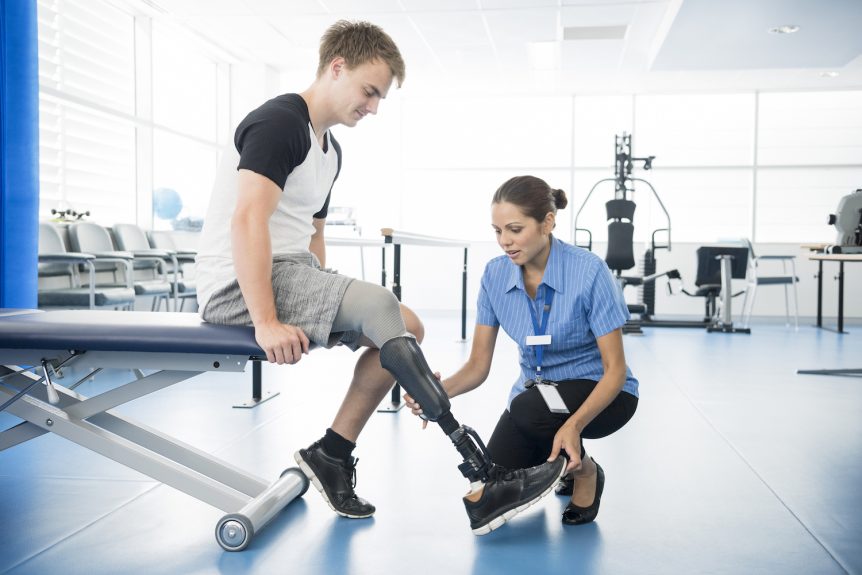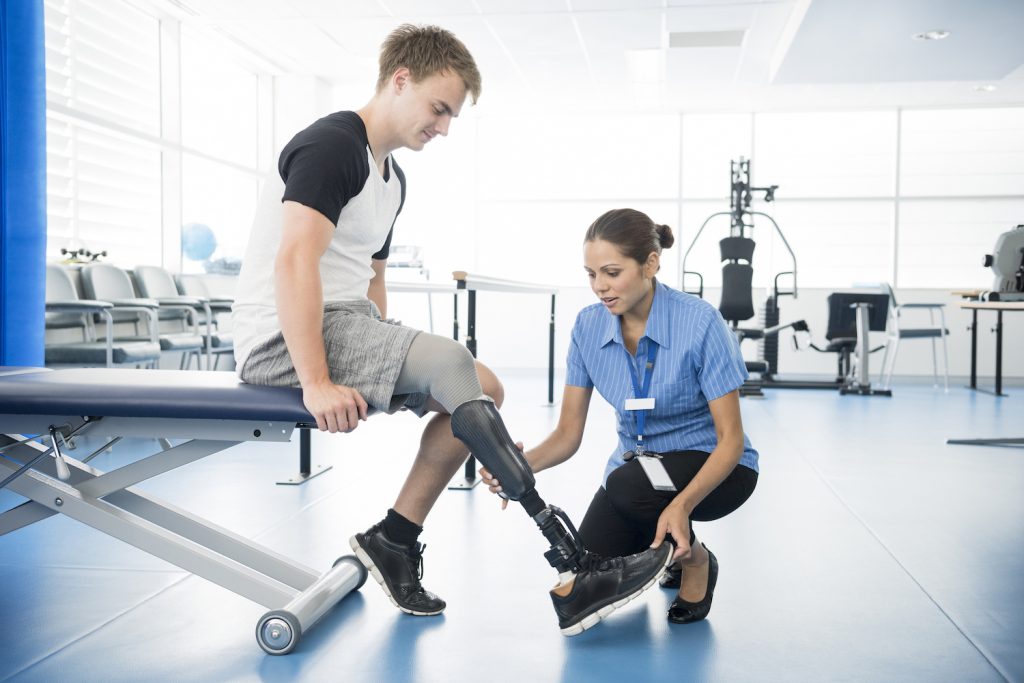
Prosthetics after Work-Related Amputation
Amputation injuries suffered on the job are traumatic, life-changing experiences. They affect the injured worker and the entire family. Work-related amputations involve surgery, hospitalization, medications, home healthcare, numerous medical providers, and prosthetics.
Working with a prosthetic specialist
Fortunately, new technologies, manufacturing techniques, and materials have produced amazing advances in prosthetics over the past 10 years. These advances give new hope for injured workers to return to a more active lifestyle. Fully articulating myoelectric hands that allow arms and hands to move and flex, knees with microprocessors, and feet that can get wet, are just a few innovations in this area.
Ideally, a specialized prosthetics provider provides input prior to surgery so that you know all of your options. This also allows the correct steps to be implemented from the beginning to give you your best chance of a successful outcome.

Unfortunately, patience is a must when facing care after an amputation. Injured workers sometimes need to wait six months or more post-injury for swelling to subside. This delay makes a proper fit of the prosthetic more favorable. Others may need additional surgery or therapy to prepare for a prosthesis. The prosthetist can work with the medical team on post-op controls, a treatment plan, and education for the injured worker.
Post amputation surgery expectations
After surgery, the swelling must be controlled. Otherwise, it is difficult to fit the prosthetic to the residual limb. Pressure on the limb, usually in the form of a tightly fitting stump shrinker, flushes out fluid and helps the limb adapt to the right shape for a good fit.
Specifically, with lower leg amputations, the prosthetist will usually have the injured worker stand up and use a walker first and may fit the person with a temporary leg to wear for a few months. Doing this allows the residual limb to continue healing and shrinking and gives the injured worker time to adjust to using the prosthetic.
Prosthetic device associated costs
Prosthetics are expensive, typically ranging from $15,000 to $70,000 for a leg, depending on the features of the prosthesis. Sockets that connect the prosthesis to the residual limb, can cost $5000 each.
No prosthetic lasts a lifetime. All injured workers will need prosthesis replacements. Some of the causes are the aging of the prosthetic, weight change, or shrinkage in the affected limb. Every prosthetic is custom-made for an individual and often requires multiple moldings and adjustments. Working with an experienced prosthetist is critical for an injured worker to have the best possible outcome from his or her prosthesis.
The future cost of prosthesis replacements always needs to be calculated whenever an injured worker with a prosthetic considers settlement of his or her workers’ compensation case. At Sadow & Froy, we have the knowledge and expertise about traumatic workplace amputation injuries to get the right medical, psychological, rehabilitation, and prosthetics team in place for our clients. This translates into successful outcomes for the seriously injured workers who we represent. We fight for our clients and we won’t tolerate delays in authorization and treatment. Don’t wait to get guidance if you or a loved one are facing amputation due to a work-related injury.
Sadow & Froy solely represents injured workers in workers’ compensations cases. The lead attorneys are both highly respected in the field, having received many awards and named to several “Best of” lists including Atlanta Magazine’s Super Lawyer lists. To see if your case qualifies for workers’ compensation, visit our website for a free evaluation.


